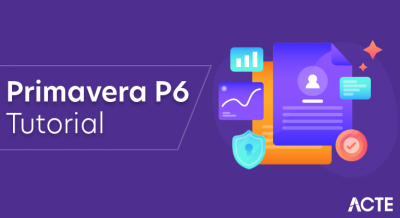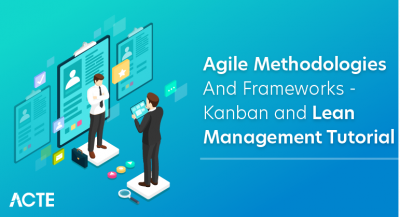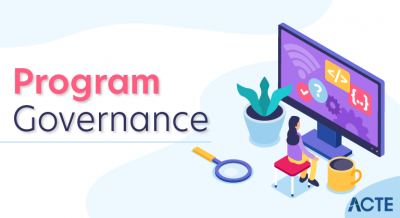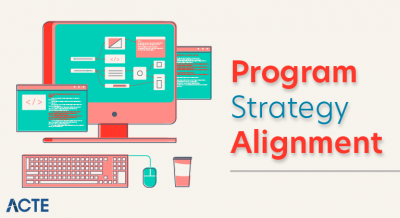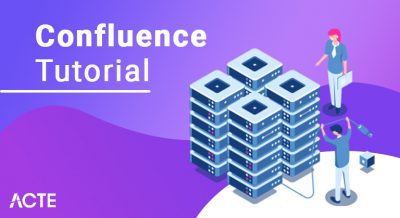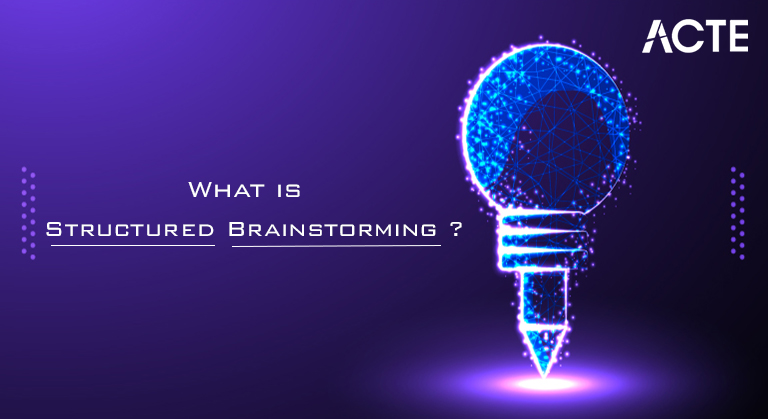
- Introduction to Structured Brainstorming
- The Basic Guidelines
- Advantages of Structured Brainstorming
- Steps in Structured Brainstorming
- Apparatuses for Structured Brainstorming
- Post-Structured Brainstorming
- Application
- Organized Process
- Unstructured
- Prior to Scheduling Your Brainstorming Session
- Step by step instructions to Run Your Brainstorming Session Right
- Arranging Your Next Steps
- Conclusion
- Concede judgment.
- Energize wild thoughts.
- Expand on the thoughts of others.
- Keep fixed on the point.
- Each discussion in turn.
- Be visual.
- Go for amount.
- Know about the limits and limitations of your association – While creating thoughts, the individuals might recommend thoughts in their fervor, just to observe later that these thoughts won’t be permitted to be taken up due to different imperatives and approaches of the association. This outcomes in squandered exertion. Subsequently it is vital for the individuals in conceptualizing to know about their constraints. This will guarantee the thoughts recommended will be sensible also.
- Pose the right inquiries – Asking the right inquiries will provide some guidance to the group in reasoning inventively however with a few design and heading. Commonly the members will think in conventional way which won’t bring about innovative reasoning. The inquiries can be outlined in such a way which will work with the group to think past their current reasoning examples.
- Pick the ideal individuals for the meeting to generate new ideas – It is vital to pick the right individuals who really are equipped for recommending significant musings and who have the expected agreement and information on the issue being talked about
- Partition the group – Dividing the group in more modest sub gatherings of 3 to 5 individuals and giving each gathering an inquiry to ponder and ideate for a proper measure of time, say 30-45 minutes and concoct the thoughts. This will permit the sub gatherings to stay centered.
- Energize quality not simply amount – It is essential to zero in on guaranteeing the nature of thoughts also, not on amount of thoughts which may all end up being good for nothing.
- Set some guidelines for each sub bunch – It is essential to set out some fundamental standard procedures for each sub gathering to keep to make the meeting to generate new ideas more productive
- Sum up and close – It is essential to sum up and finish up each sub bunch conversation and finish up the general meeting to generate new ideas with a synopsis of discoveries from the meeting
- Follow up – It is essential to follow up by assessing every one of the thoughts produced from the meeting to generate new ideas and come to an end result straightaway. In the event that the development on decision making from conceptualizing is postponed, things will get weakened and might be all the work might get lost.
- An assortment of thoughts from the colleagues concerning a specific issue or an issue will end up being more effective.
- Opens up another culture inside the association where colleagues are allowed to voice their thoughts.
- It further keeps predominant colleagues from starting to lead the pack and giving the remainder of the colleagues an unreasonable opportunity.
- Advances collaboration among colleagues.
- Helps the colleagues to think of thoughts to accomplish the current mission.
- State plainly the level headed/subject behind the organized conceptualizing. Ensure that every member is completely mindful of what is generally anticipated from the meeting to generate new ideas. This will save time and energy of the group.
- Allow each colleague an opportunity to show or voice his/her thought.
- During organized conceptualizing, prompt that colleagues are not permitted to censure each other’s perspective or thought. This advances opportunity of sharing one’s thought without a second thought.
- Rehash the round until the colleagues don’t have additional thoughts or arrangements.
- Survey the contribution from each colleague and dispose of any copy input.
- Center is urgent with regards to organized meeting to generate new ideas. Hone the fixation levels of the members. You can involve a few activities toward the start of the meeting to expand the focal point of the members.
- Rather than recording discretionary principles, energy with fun loving nature makes a difference.
- Express the quantity of thoughts.
- Assemble and bounce.
- Make the space recollect.
- Stretch mental muscles.
- Get useful.
- Market capitalization
- Deals circulation techniques
- A brand or an item
- A business thought
- A technique e.g., entering new business sectors
- A division of the association
- An association examining its market
- An item getting to its market
- Surveying a specific brand corresponding to a market
- A recently wandering business
- For new methodologies in view of entering a market
- For an obtaining
- For a venture a potential open door
- Diminish the rundown of thoughts given in light of the concurred need
- Blend the focuses, which are comparative in nature together
- Conversation is significant, benefits to be given for every criticism
- Kill thoughts that are not pertinent to the theme
- Allow the colleagues an opportunity to write down thoughts on the off chance that they have any and impart later
- The meeting to generate new ideas can be organized so everybody takes part thus, or can be unstructured, with individuals offered the chance to partake whenever.
- The organized meeting enjoys the double benefits of empowering equivalent cooperation by all and not permitting anybody to overwhelm the trade, however may not permit as much unconstrained free progression of thoughts.
- Absence of concentration (what, precisely, is the motivation behind this meeting?).
- Sloppiness (where are we headed, and why?).
- Gathering some unacceptable individuals (who are either excessively high, excessively low, or just incidentally involved).
- Members who feel impaired (or excessively enabled).
- A lot of analysis too early (conceptualizing is planned to empower out-of-the-case thinking). Neglecting to get ready members for what’s being requested from them (individuals might show up ill-equipped).
- Helpless assistance (help is a craftsmanship and some of the time requires an expert).
- Getting off subject (it’s not difficult to get hindered in issues encompassing the theme).
- Neglecting to follow up (your meeting created good thoughts that were rarely investigated).
- Put things in place by introducing your objectives, depicting the conceptualizing system and assumptions for exercises following the gathering, and obviously illustrating the timetable by which they will be accomplished.
- Share basic data that your group will require: area of washrooms, plans for food breaks, expected fruition time, suspicions in regards to utilization of cells, accessibility of espresso, and so on Assuming you neglect to give this data, there’s a decent opportunity your members will invest quite a bit of their energy attempting to find the solutions from each other!
- Tell members in a real sense where to sit. Remember that it’s generally expected a smart thought to separate social or potentially work gatherings, both to build inventiveness and furthermore to decrease kibitzing in the corners.
- Present the facilitator and depict their job. Assuming that individual is you, clarify your own job. Clarify that the facilitator’s assertion is regulation: in the event that the facilitator says “time’s up,” the time is up!
- Compose, post, and answer inquiries regarding rules and techniques. This might incorporate a reiteration of the “hold your study” rule, limits on talking time, limits on basic remarks, techniques for requesting the floor, and so on Let individuals know whether you plan to request that every individual talk, or regardless of whether you’re available to lifted hands.
- Select a watch and additionally put a clock up front.
- Choose a note-taker and furnish them with a whiteboard, flipchart, or different devices required.
- In conceptualizing, everybody is equivalent. Icebreaking meetings are a decent method for laying out this thought by messing around in which everybody plays an equivalent part. It’s additionally an incredible method for beginning inventive energies pumping.
- Icebreakers can incorporate games, for example, “assuming you could pick a superpower, which would it be, and why?” or “what creature best addresses you, and why?” The way to progress with such icebreakers is to incorporate everybody: nobody will “pass” since they think the thought is senseless!
- Start the conceptualizing system with an okay, project-related inquiry that permits everybody to throw in a thought without genuine worries about “looking senseless.
- ” Be certain everybody makes some noise somewhere around once. For instance, inquire “assuming you could request that a genie tackle our concern or complete our venture, and so forth, then, at that point, what might you request that the genie do?” You might find that individuals have altogether different thoughts regarding what to want and it’s those various thoughts you’re looking for through the conceptualizing system.
- Permit the facilitator to take over totally (except if you are the facilitator, obviously). Be certain the facilitator makes sure to repeat the “all thoughts are smart thoughts” rule, and urges everybody to talk. Adhere to the guidelines and timetable you’ve set up.
- As well as having your note taker take notes, do record the meeting utilizing either sound or video (contingent on your inclination, necessities, and arrangement).
- Eventually, your gathering will struggle thinking of extra thoughts. Here and there that is on the grounds that they’ve truly offered every one of their viewpoints. Regularly, however, they might require a short breather or a brief period to think.
- On the off chance that a break doesn’t bring about extra imagination, have a go at returning to a couple of the thoughts that have as of now been communicated. Does anybody have a thought that connects with or expands on one of these?
- Too minimal inventive reasoning or a lot out of this world creative mind can be dangerous to viable conceptualizing. While it’s extraordinary to think innovatively, strange ideas expected to triumph when it’s all said and done (Let’s arrangement with the Martians rather than our clients!) can direct things off subject. By similar token, very moderate thoughts (Let’s do how we treated time, yet give it a red trim rather than a blue trim) can smother innovative reasoning.
- Utilize your help abilities to guide individuals back on course. Perhaps the Martians aren’t a choice, yet would it be advisable for us to contemplate connecting with something else altogether of clients? Perhaps trim isn’t the issue, yet configuration might be. How might we grow our graphical methodology?
- It’s extremely simple for conversation to control itself away from vision and ideation and into viable issues. For instance, “It’s incredible to say you need new deals material, yet we’d require more staff to make that material and…” or “We attempted that thought five years prior, and it didn’t work because…”
- These conversations will be significant as you move from conceptualizing into working gatherings, so let your group in on this. Request that they make notes and elect to be important for the functioning gathering that resolves commonsense issues, for example, staffing, operations, and so forth
- Having one individual corner the conversation or a few group “quitting” of the conversation are both tricky. Each gathering has its straightforward and modest individuals, however conceptualizing requires general interest.
- Assuming you expect or see an issue with specific individuals overwhelming or staying away from inclusion, change your methodology. Have a go at involving a cooperative method wherein every individual is approached to introduce their thoughts, consistently. To keep away from the issue of individuals investing all their energy holding back to talk, approach individuals in a capricious succession.
- Whenever individuals get exhausted, off-theme talking, mobile phone use, and doodling become more fascinating than the conceptualizing itself. You have a couple of choices for staying away from fatigue.
- In the first place, obviously, hold your meetings to generate new ideas to a sensible length. Two days of conceptualizing can leave anybody exhausted.
- Second, fluctuate your methodology. Rather than basically requesting thoughts for a considerable length of time straight, have a go at utilizing various conceptualizing strategies, for example, brainwriting, starbursting, and so on Assuming you actually see anxiety in the positions, think about how conceivable it is that it’s the ideal opportunity for a break.
- Break the gathering into more modest groups, request that each group rank thoughts, and afterward request that each group report.
- Highlight every thought on the board and request that the whole gathering vote on which they like best.
- Enjoy some time off during which you by and by rank thoughts, and afterward request that the gathering remark on your decisions.
- Request that each gathering part put an imprint close to their main three thoughts, and afterward compute the outcomes.
- Put the rundown of thoughts into an available area and request that people post their remarks about every thought throughout a few days (this should be possible with post it notes and banner paper).
Introduction to Structured Brainstorming :-
This is an orderly cycle, which urges members to effectively include by contributing thoughts in a non basic or non-evaluative climate.Organized meetings to generate new ideas are embraced by associations to track down answer for issues that endures in a workplace. Numerous effective associations utilize organized conceptualizing as key apparatus with regards to independent direction.
Conceptualizing is a gathering inventiveness strategy by which endeavors are made by including a gathering to observe a decision for a particular issue by social affair a rundown of thoughts precipitously contributed by its individuals. Meetings to generate new ideas by and large doesn’t force any limitations on the individuals, rather urges individuals to think inventively and present their thoughts with practically no anxiety toward analysis.
In any case, frequently it is observed that meetings to generate new ideas don’t prompt the finding of anticipated results, bringing about squandered endeavors. Subsequently there is a requirement for directing the meetings to generate new ideas in a more deliberate and organized style so it brings about making various significant and powerful thoughts.
Organized conceptualizing alludes to the course of orderly and liberal age of a huge volume of thoughts from various members by empowering every one of them to chip in their imaginative information sources each in turn in a climate that is liberated from analysis and judgment from different members.
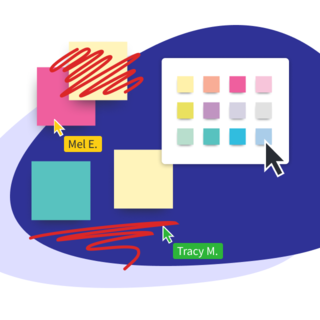
The Basic Guidelines :-
In any case, to make conceptualizing more compelling there is a requirement for embracing more organized methodology by remembering a portion of the accompanying places:
Advantages of Structured Brainstorming :-
The essential advantage of organized conceptualizing is that it’s a cooperation of thoughts. Notwithstanding, there’s a contrast between organized conceptualizing and unstructured conceptualizing. In organized conceptualizing, the members are given rules and rules to keep, so the contribution from the meetings is in a methodical way and productive. With regards to unstructured conceptualizing, there are numerous thoughts by members, however the meeting to generate new ideas may not be driving towards a particular objective.
The advantages acquired from organized conceptualizing are as per the following:
Steps in Structured Brainstorming :-
Organized conceptualizing can end up being troublesome as information comes from different colleagues. Thus, the accompanying advances can be followed to guarantee that helpful outcomes can be gotten toward the end.
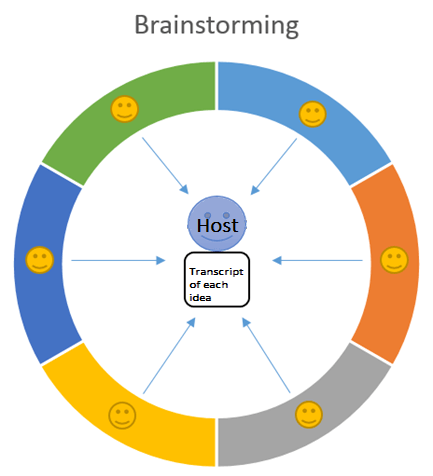
Customs of Structured Brainstorming
An awful organized meeting to generate new ideas will cost your association cash, energy and time on the off chance that the goal of the meeting to generate new ideas isn’t met. This might cause inconvenient elements, which trigger to loss of ventures, and so forth Thus, here are a few strategies for effective conceptualizing to be utilized in your association.
Talk and conceptualize pretty much every one of the conceivable outcomes/causes and so forth, for the front and center concern. Never miss a thought. Have somebody recording the meeting to generate new ideas.
Apparatuses for Structured Brainstorming :-
SWOT Analysis and PEST Analysis are exceptionally successful instruments for organized conceptualizing. SWOT investigation is a valuable device with regards to direction. SWOT represents Strengths, Weakness, Opportunities and Threats. Meetings to generate new ideas regularly use SWOT as an investigation device for assessing systems. SWOT investigation is utilized to survey the accompanying variables:
Bug examination alludes to Political, Economical, Social and Technology. Bug examination is additionally frequently utilized in meetings to generate new ideas to comprehend the market position of an association. Nuisance can be utilized under the accompanying reasons:
Post-Structured Brainstorming :-
Whenever you have finished the meeting to generate new ideas, the accompanying should be finished:
Conceptualizing is a group focused interaction used to produce new and ideally innovative plans to take care of an issue. The reinforcement of conceptualizing is an environment of suspended judgment – no analysis – with the goal that an enormous number of thoughts uninhibitedly stream from the members. Numerous answers for complex issues come from thoughts that may appear “insane” right away, so Brainstorming is planned to support crisp reasoning and “insane” thoughts.
Application :-
Organized Process :-
1. After framing the group, the issue to be tackled is expressed and recorded so that everybody could see.Utilize a flipchart or whiteboard. Ensure the issue is plainly expressed, and everybody gets it. Survey the course of how the meeting to generate new ideas will be directed – the guidelines.
2. Moving around the room, each colleague presents a suggestion. Colleagues are allowed to take a break. NO analysis of thoughts is permitted – NONE
3. The group pioneer or an assigned individual records the thoughts as they are created on the flipchart or whiteboard. Guarantee that the expressions of the speaker are not summarized or altered – this can be an unpretentious type of analysis.Confirm with the speaker that the thought was phrased accurately.
4. Keep moving around the room until there are no thoughts left.
5. Review the rundown of thoughts to ensure they are plainly phrased, and dispense with copy thoughts.
6. Group or consolidate thoughts on the off chance that there are normal classes.
Unstructured :-
The unstructured cycle follows the diagram above with one distinction – thoughts are presented by anybody whenever rather than by bossed pivot around the room. Conceptualizing is a dependable way to deal with producing valuable novel thoughts more often than not. However, there are many elements that can impede a fruitful meeting to generate new ideas. Here are a few instances of what can turn out badly in a meeting to generate new ideas:
To anticipate a fruitful meeting to generate new ideas with ideal results, it’s critical to look forward, pick the ideal individuals to take part and work with, and know precisely what you need your result to be. In this instructional exercise, you’ll figure out how to conceptualize successfully collectively: from tending to introductory worries, to how to run a meeting great, rank the smartest thoughts your gathering produces, and at last choose which groundbreaking plans to make a move on.
Prior to Scheduling Your Brainstorming Session :-
Here is a rundown of six significant measures to think about at first so you set up your meeting to generate new ideas with the most extreme opportunity for progress:
1. Be Sure You Really Want to Brainstorm :
Conceptualizing can be an incredible method for assisting your group with feeling occupied with the interaction. Whenever you welcome conceptualizing, you’re telling individuals you’re available to their thoughts. In any case, before you bounce in, be certain conceptualizing is truly suitable now in the undertaking.
2. Record Your Brainstorming Goal(s) :
Keep in mind, you want objectives both for the actual meeting and for follow-up. All that you do previously, during, and after your meeting to generate new ideas ought to allude back to your objectives. All things considered, on the off chance that you don’t have the foggiest idea why you’re conceptualizing why trouble?
3. Have Clarity on the Input You’re Wanting :
Be certain you realize what sort of conceptualizing input you’re focusing on and what the relational elements are probably going to be. At the point when you realize that, you can choose the best conceptualizing strategy for your specific requirements.
For instance, assuming that you’re wanting to incorporate your whole group chiefs, implementers, and care staff-you may decide to utilize a “brainwriting” approach. This technique permits people to record their musings instead of talking resoundingly.
4. Welcome the Appropriate Participants :
In light of how you might interpret the objectives, reason, and interaction, make up a rundown of invitees. Give your all to be certain that the rundown incorporates people who are straightforwardly associated with overseeing and carrying out the undertaking you have at the top of the priority list.
5. Pick a Venue that Fits Your Group Best :
In light of everything you’ve done as such far, select a scene that will be agreeable and helpful, however not so agreeable or motivational that members nod off, begin browsing their email, or go off on digressions. At the end of the day, a happy with meeting room is an extraordinary decision, yet an excessive amount of staggering view can be an interruption. Espresso and tidbits are extraordinary, however a smorgasbord can prompt talking, plate topping off, and different exercises that occupy from the cycle.
6. Work With an Experienced Facilitator :
Select a facilitator with genuine, significant conceptualizing experience and preparing. Give that individual all the data they need to deal with the gathering and lead the interaction toward the objectives and plans you have as a top priority. Assuming you intend to work with, realize everything you can about the cycle so that you’re ready to empower innovativeness for a positive, valuable meeting to generate new ideas.
Step by step instructions to Run Your Brainstorming Session Right :-
Presently how about we dive into how to run your meeting to generate new ideas successfully, from laying everything out, to thinking of thoughts, positioning them, and investigating issues on a case by case basis.
1. Set everything up :
Before you begin conceptualizing, give your gathering the data they should be effective. A portion of that data connects with the conceptualizing system and some to individual solace! Make certain to cover these bases:
2. Push Your Session Ahead
Presently with the scene set, objectives and standard procedures set up, it’s an ideal opportunity to start. The following are a couple of activities to get everything rolling and push the meeting to generate new ideas ahead:
Activity 1. Start With an Icebreaker
Activity 2. Nimble Up
Activity 3.Get everything rolling
Activity 4. Record Everything!
3. Investigate Brainstorming Problems
As you get into the conceptualizing system, you might run into one or more normal difficulties. This is the way to perceive and resolve them:
Issue 1.Evaporating or Becoming Repetitive
Issue 2.Not Enough or Too Much Creativity
Issue 3. Getting Off Topic or Lost in the Weeds
Issue 4. Support Issues
Issue 5. Weariness
4. Positioning Ideas
While the conceptualizing closes, the arranging system begins. Your best course of action will be to choose the smartest thoughts for activity. To do that, you’ll have to work with a conversation that incorporates moving points into great/better/best classes. Contingent on the size of the gathering and your specific requirements, you may:
Arranging Your Next Steps :-
The general purpose of conceptualizing is to foster thoughts for activity. When the smartest thoughts are chosen, you’ll have to foster team gatherings to take the plans to a higher level. To do this, most directors:
1. Set up working gatherings to thoroughly consider issues and coordinated operations. Each gathering ought to remember people with strong experience for the area they’re tending to as well as individuals who will really be accomplishing the work. Request that bunch individuals allude back to notes they took during conceptualizing.
2. Create a timetable with clear targets, objectives, and achievements.
3. Plan gathering times and talk about appointed assignments for each gathering.
How should functioning gatherings respond? Your decision will rely on the granularity of the thoughts, regardless of whether the thoughts will require financing, whether they will expect changes to representative design or recently added team members, and so on
The way to progress isn’t to follow an unbending framework, yet rather to be certain that each gathering has clear, noteworthy destinations and objectives, realizes what’s generally anticipated at every achievement, and is given the position to settle on at minimum starter choices.
Conclusion :-
Organized conceptualizing is a procedure used to produce thoughts, which can assist with taking care of an issue. Organized conceptualizing assists with empowering imaginative reasoning and energy between colleagues. It additionally urges freewill to acknowledge each other’s musings.


